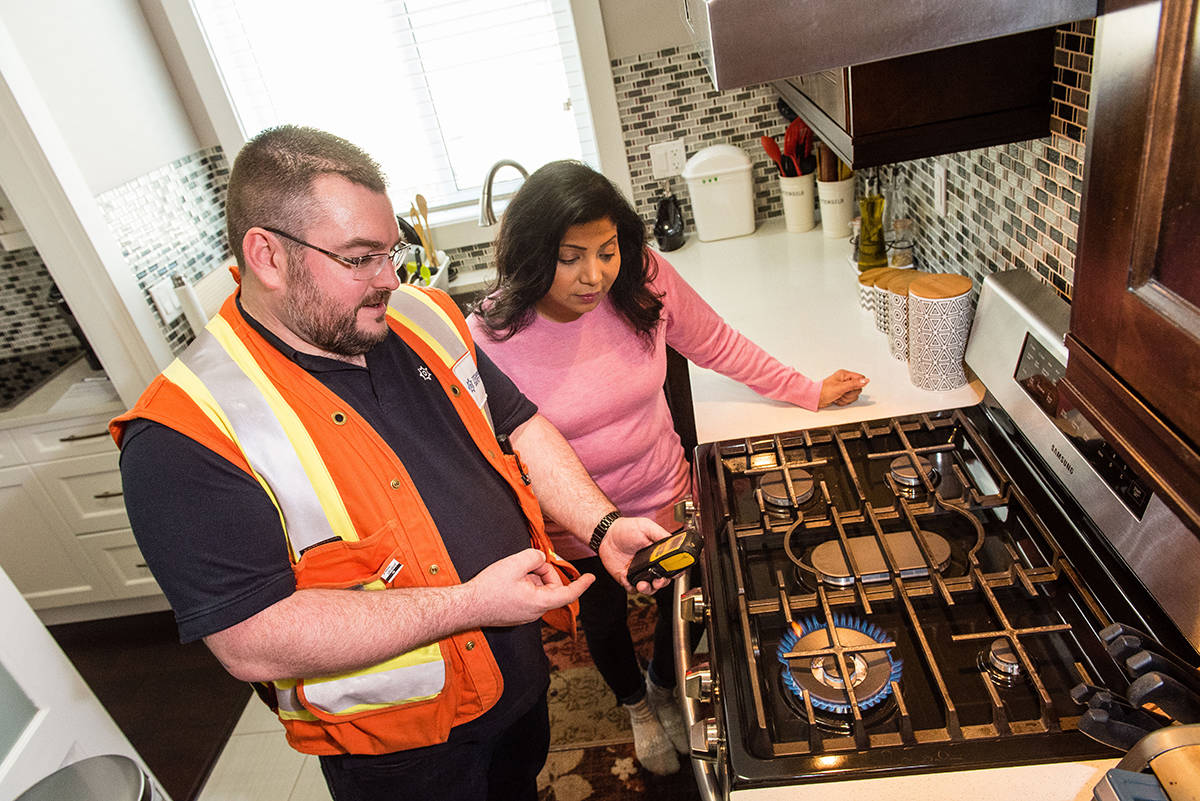During Carbon Monoxide Awareness Week (November 1-7), Technical Safety BC is reminding residents to make sure they have working carbon monoxide (CO) detectors and that their fuel-burning appliances have been checked.
The non-profit safety regulator is also teaching people about the dangers of CO poisoning, which can result in serious illness or death.
According to the BC Coroners Service, there have been almost 120 deaths in the province in the last 10 years due to CO poisoning.
Continue reading to learn about the source and symptoms of CO as well as how to prevent and react to exposure.
What is CO?
CO is a colourless, odourless and tasteless gas produced by burning carbon fuels, such as propane, natural gas, oil, wood, charcoal, kerosene or gasoline. Exposure to CO interferes with the body’s ability to absorb oxygen, which can result in serious illness or death.
What are the sources of CO?
Gas-fired furnaces, boilers, hot water tanks, stoves, dryers and fireplaces are all common sources of CO in the home. These appliances – along with the venting systems and fresh air supply into your home – should be checked at least once a year.
How can I prevent CO exposure?
There are two important ways to prevent CO exposure.
First, always have your gas-fueled appliances serviced once a year by a licensed contractor to confirm they are in good working order and that all related venting systems are functioning as they should.
Second, make sure you have a functioning, Canadian-certified CO detector in your home. Follow the manufacturer’s installation instructions, which in most cases, say to put the detector in the hallway outside your bedrooms and on each level of your home.
If your detector isn’t hardwired, check your batteries twice a year. And if it’s more than seven years old (check the end of life date), get a new one. Units with sealed lithium batteries require no battery replacement or maintenance.
Know the difference between an actual alarm sound versus the low battery or end of life warning. Never ignore any activation of a CO alarm. Although the alarm can be triggered by gases or conditions other than CO, an activation must be investigated to determine the cause.
What are the symptoms of CO?
Early symptoms of carbon monoxide poisoning resemble the flu and can include headaches, dizziness, weakness, vomiting, chest pain, and confusion.
As CO builds up in the bloodstream, symptoms change or magnify. Look out for increased confusion and drowsiness, fast breathing or heartbeat, or increased chest pain, vision problems and seizures. CO poisoning can be fatal if left untreated.
What should I do if I suspect CO poisoning?
If your CO detector goes off or you believe you’re being exposed to CO, turn appliances off, leave the building, then seek medical attention.
If you are unable to leave the dwelling, move next to an open window or an open door. Don’t return to the area until the fire department or your gas provider says it is OK to do so.
Carbon monoxide incidents should be reported to Technical Safety BC online or by phone at 1 866 566 7233.
Learn more at www.cosafety.tips.
